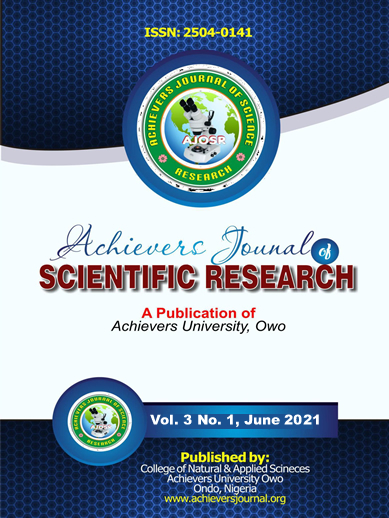Time Series Analysis of Tax Report of Federal Inland Revenue Service
Abstract
This paper discussed the effect of Nigeria’s company income tax on some of the indirect tax variables in Nigeria. The data used is a time series data that ranges between a period of ten years, from 2007 to 2016. The secondary data collected were analyzed and Augmented Dickey-fuller suggested that CIT, EDT and PIT variables are stationary at level while VAT and WT became stationary at the second difference after unit root test were carried out on individual variable. Vector Error Correction Model suggested that there’s a long-run relationship between the variables and Granger causality test were also conducted to investigate the direction of relationship between the company income tax and other major indirect income taxes considered and the results show that there's almost a feedback system in the data set. the effect of Tax incomes on CIT with respect to shocks were forecasted into the future for the period of ten (10) years utilizing Forecast Error Variance Decomposition(FEVD) and in period 1 only 0% of the forecast error variance is explained by shocks to Withholding Tax (WT). This percentage subsequently increases and finally increased to 8. 92% for EDT, and in the same manner it increases to 15.91%, 34.52%, 10.44% by Period 10 for PIT, VAT, WTT respectively. Clearly, 100% of the forecast error variance in Period 1 is explained by momentum (variance in past values of CIT). This percentage declines to 30.21% of the variance by Period 10





